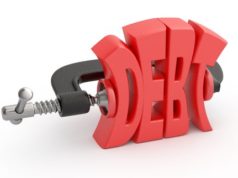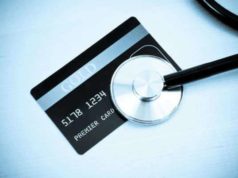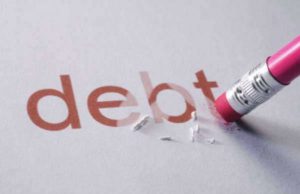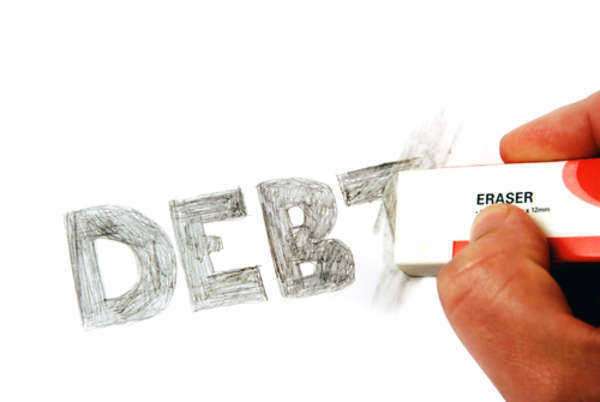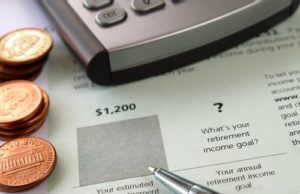
Understanding the Process of Debt Relief Order
Debt Relief Order (DRO) is a legislated debt solution in the UK that enables financially challenged individuals to settle their debts within a year while paying reduced fees. Unlike other debt solutions, a DRO is a quick and straightforward process that helps people free themselves from unmanageable debts and find stability in their finances. In this article, we will discuss the ins and outs of DRO, how to apply, and steps to take in qualifying. This way, you’ll understand the specifications, requirements, and legal processes involved in Debt relief Order.
What is a Debt Relief Order?
A Debt Relief Order (DRO) is an insolvency proceeding that’s aimed at helping individuals clear their debts. Since its introduction in 2009, people have adopted it as a reliable tool for escaping debt repayment pressures in the UK. DRO is a court-based debt management procedure that writes off debts under specific conditions. However, there are strict eligibility criteria to qualify for DRO. In the following sections, we’ll dive deeper into how DRO works and what specific terms one needs to satisfy to qualify for it.
How Does DRO Work?
Like every other financial process, DRO has to follow a specific protocol. Generally, once a person applies for DRO, an intermediary agency examines their application based on rules and regulations to determine if they qualify. After verification, the application is sent to the Insolvency Service, which verifies the application again for eligibility. Once the Insolvency service approves the application, a stayer (a court-appointed official) reviews the documents before submitting them to the court.
The court will then grant a Debt Relief Order that exists for 12 months, and afterward, the debts are written off under the certain specified conditions. This means creditors will not be able to pursue the applicant for debts and apply any legal action to recover debts. However, applicants must meet up with the responsibilities of the order. Any inconsistency by the applicants to the terms of the order can result in the court revoking the application, and all previous debts will be returned.
Eligibility Criteria for Debt Relief Order
To obtain Debt Relief Order, an individual must meet the specified eligibility criteria. The individual must:
– be unable to pay off their debts – live, have lived, or possess a place of work in England, Wales, or Northern Ireland for at least three years – not have more than £50 left at the end of the month, be it from non-payable debts or income – have not exceeded £20,000 worth of assets with little or no chance of sales that can clear off debts. – not have any previous DROs within six years.
It is essential to note that Debt relief order is only for individuals and not applicable to businesses. Therefore, it is vital to verify eligibility before applying.
Requirements for Applying for Debt Relief Order
Apart from being eligible for DRO, specific details and requirements must be presented before gaining admission to it. The requirements include:
– Identity documents – Financial account details – Employment and income information – housing cost analysis – debt summary
All these details are required for verification and to determine the necessary steps for potential applicants to take before debt relief order applications.
The Debt Relief Order Process – Step-by-Step Guidelines
Debt Relief Order application process can be stressful for people unfamiliar with it. As highlighted earlier, DRO works through a series of steps with appropriate documentation required for each step. Below is a detailed guide on how to apply for DRO.
1. Confirm eligibility for DRO application
Before applying for DRO, ensure you qualify for it. Check the above eligibility criteria to know if you comply with the requirement. If you are yet to reach three years of living or working in the United Kingdom, you can never qualify for a debt relief order in the UK.
2. Identify a DRO intermediary agency
While the court processes DRO applications, intermediary agencies play a critical role in the paperwork before submitting the application to court. Therefore, potential applicants must settle with an intermediary agency to complete and verify the application documents.
Here are the approved DRO intermediary agencies by the UK government as of 2021:
– citizensadvice.org.uk – AdviceUK.org.uk – StepChange.org.uk – Nationaldebtline.org
Note: It’s vital to choose the right DRO intermediary that is approved by the UK government to avoid scams or fraud.
3. Get help from an intermediary agency
Once you have identified an intermediary agency, arrange to meet with them for evaluation and compilation of the documents needed for your DRO application.
4. Intermediary agency evaluation
During the evaluation, various details of the application are processed, including essential financial information and obligations. The intermediary will check if DRO is the best option or if there is any other debt management solution more suited to the applicant.
5. Application fee payment
The most significant factor that differentiates DRO from other debt repayment solutions is its low fee. The DRO application fee is £90 and must be paid to the intermediary agency.
6. Verification
After payment, the intermediary will verify the application and submit it to the Insolvency Service – the UK government department responsible for collaborating with the court concerning DRO applications.
7. Insolvency Service Verification
The Insolvency service will evaluate the application to affirm its eligibility status and confirm that the applicant has satisfied all specified criteria.
8. Court Acceptance
Once the Insolvency service approves the application, it is officially submitted to the court for further verification. Once accepted, the court will grant the DRO.
9. Debt Relief Order in Effect
After the court grants a DRO, the eligible applicant(s) can now enjoy debt-free life without any legal or financial hindrance as creditors won’t be able to pursue them anymore.
Responsibilities of DRO Participants
DRO participants have specific duties to carry out after being accepted by the court. One of such tasks includes maintaining a good financial record. Any fluctuation in finance can lead to a revocation of the order and a possible return of the previous outstanding debt. During the 12-month DRO period, the following obligations must be observed:
1. Restrictions on Borrowing
Borrowing money above £500 without notifying the person or institution providing the loan about their DRO status is prohibited.
2. Stability Requirements
Participants must maintain a stable living condition for a year; this means staying in one place or paying rent.
3. Report any changes
Any changes in circumstances such as income and expenses must be reported to the intermediaries, the Insolvency Service, and the court if necessary.
4. No management position
You cannot hold managerial or company director positions during the DRO period.
5. Complete DRO course
Participants must complete a specified course within six months of DRO acceptance to be eligible for the next steps of DRO and the complete writing off of debts.
Conclusion
Debt Relief Order is an option for individuals facing debt repayment challenges in the United Kingdom. This article gave detailed information and guidelines on DRO eligibility criteria, requirements, and the application process. It is essential to comply with all instructions and legal procedures before applying for the Debt Relief Order process to avoid any form of revocation and consequences. If you are struggling financially, and you meet all the stipulated criteria that qualify you for debt relief order, you may consider this process as it can be your lifeline to a fresh start.
What is Federal Debt Recovery?
Debt Recovery is a process within which individual debtors may rectify their financial situations that may have involved a varying nature of defaulted loans, incurred debt, or financial insolvency; although the process and procedure inherent within debt management may appear daunting at first glance, debt recovery may be both possible and achievable for individual and eligible debtors – the overarching classification as ‘debtors’ includes a wide range of financial circumstances, which may range from private citizens to commercial endeavors.
While Federal Debt Recovery may range not only in complexity, as well is structure, government-sponsored Debt Recovery varies in accordance to pricing, standards, conditions, costs, consequences, and terms latent within an agreement undertaken between the debtor and the institution offering Debt Recovery options.
Mortgage Forgiveness Debt Relief Act of 2007
In 2007, former-President George W. Bush passed this debt recovery inspired legislative act in order to provide assistance to individuals who were affected by the collapse of the housing and property market shortly before the act’s passing. Mortgages are defined as secured loans furnished to recipients, both private and commercial in classification. Mortgages are furnished in order to allow eligible applicants the opportunity to obtain real property whose sales price exceeds the amount of capital in their possession. In the event of a defaulted mortgage, this type of secured loan may become secured debts in the event that the individual in possession of a mortgage fails to repay or satisfy the mortgage in question:
Debt Recovery through Scheduled Repayment
This Debt Recovery Act relieves eligible individuals the requirement to furnish income taxes on certain outstanding mortgage loans; in addition, this Debt Recovery Act offers eligible debtors the opportunity to avoid the filing for bankruptcy through mortgage loan restructuring, consolidation, and the availability of repayment plans enacted in order to stimulate Debt Recovery:
The standard repayment plan furnished through a government-sponsored Debt Recovery program provides for a standardized payment required for furnishing on a monthly basis on behalf of the individual debtor concerning the lending institution
The extended repayment plan furnished through a government-sponsored Debt Recovery allows for an extension of the repayment period concerning the life of the loan itself the time of the loan, which typically results in the lessening of the required, scheduled repayment amount
The graduated repayment plan furnished through a government-sponsored Debt Recovery provides for a variable repayment amount with regard to life of a defaulted loan
A prorated repayment plan furnished through a government-sponsored Debt Recovery allows for debtors wages, earning, and income to serve as a determinant factor with regard to the establishment of repayment amounts
Bankruptcy and Federal Debt Recovery
Although debt recovery may be achieved through the filing for bankruptcy, the penalties associated with doing so may vary with regard to their effect on an individual’s financial records, as well as on their credit history; however, in certain cases, a bankruptcy claim may prove to be the most sensible method of debt recovery available. Prior to filing for bankruptcy, you are encouraged to seek out legal counsel in order to obtain the necessary – and certified information regarding filing such a claim.



